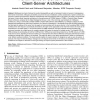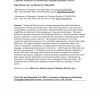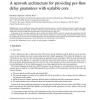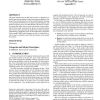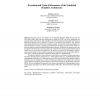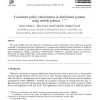TPDS
2002
14 years 2 months ago
2002
Middleware has been introduced to provide interoperability as well as transparent location of servers in heterogeneous client-server environments. Although such benefits accrue fro...
TGIS
2002
14 years 2 months ago
2002
Traditional GISystems are no longer appropriate for modern distributed, heterogeneous network environments due to their closed architecture, and their lack of interoperability, reu...
TC
2002
14 years 2 months ago
2002
This article presents simple and highly regular architectures for finite field multipliers using a redundant representation. The basic idea is to embed a finite field into a cyclo...
JHSN
2002
14 years 2 months ago
2002
Abstract. Many real-time applications demand delay guarantees from the network. A network architecture designed to support these applications should be robust and scalable. The Int...
GIS
2002
ACM
14 years 2 months ago
2002
ACM
The paper describes how the Web can be used as a support for intensive querying and display of large moving objects databases. We present first an architecture for a system which ...
JUCS
2000
14 years 2 months ago
2000
: This paper presents an evaluation of our Scheduled Dataflow (SDF) Processor. Recent focus in the field of new processor architectures is mainly on VLIW (e.g. IA-64), superscalar ...
DKE
2002
14 years 3 months ago
2002
This paper briefly traces the evolution of information system architectures from mainframe-connected terminals to distributed multi-tier architectures. It presents the challenges ...
DEDS
2000
14 years 3 months ago
2000
We address the problem of failure diagnosis in discrete event systems with decentralized information. We propose a coordinated decentralized architecture consisting of local sites ...
ALIFE
2000
14 years 3 months ago
2000
The evolution of simulated robots with three different architectures is studied in this article. We compare a nonmodular feed-forward network, a hardwired modular, and a duplicatio...
JNW
2007
14 years 3 months ago
2007
Abstract— The major trend in next-generation or 4G wireless networks (NGWN/4G) is the coexistence of diverse but complementary architectures and wireless access technologies. In ...
